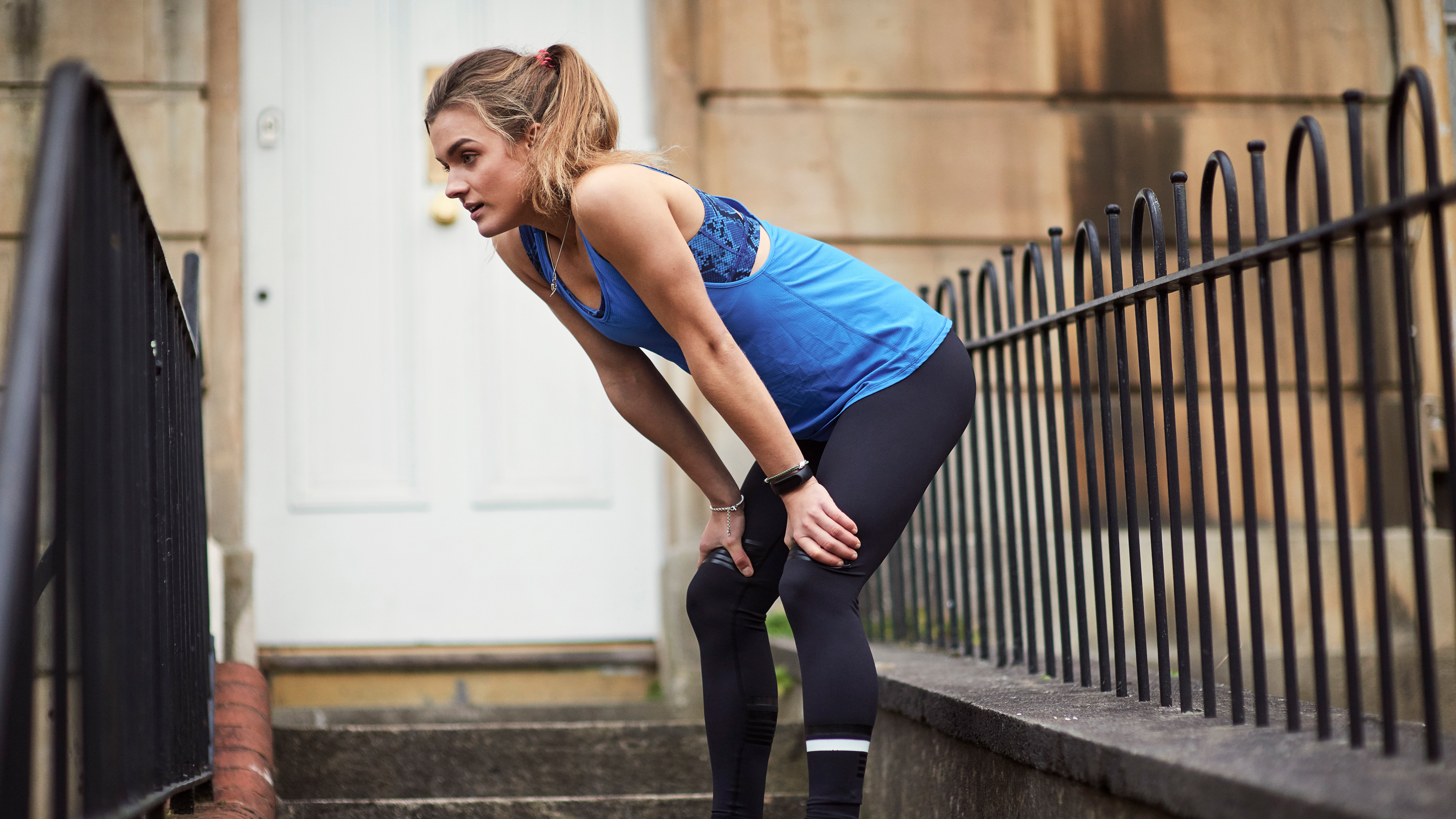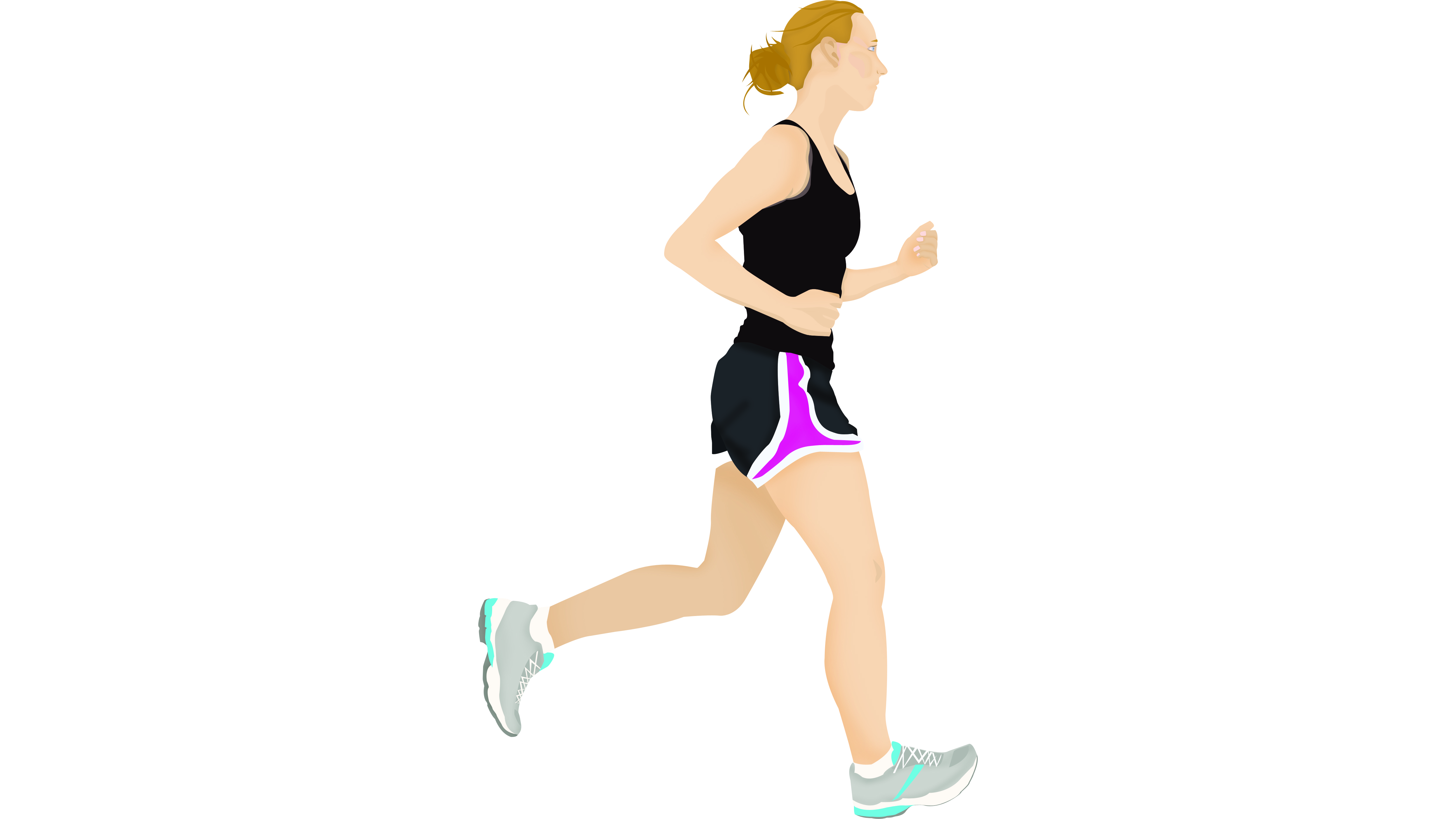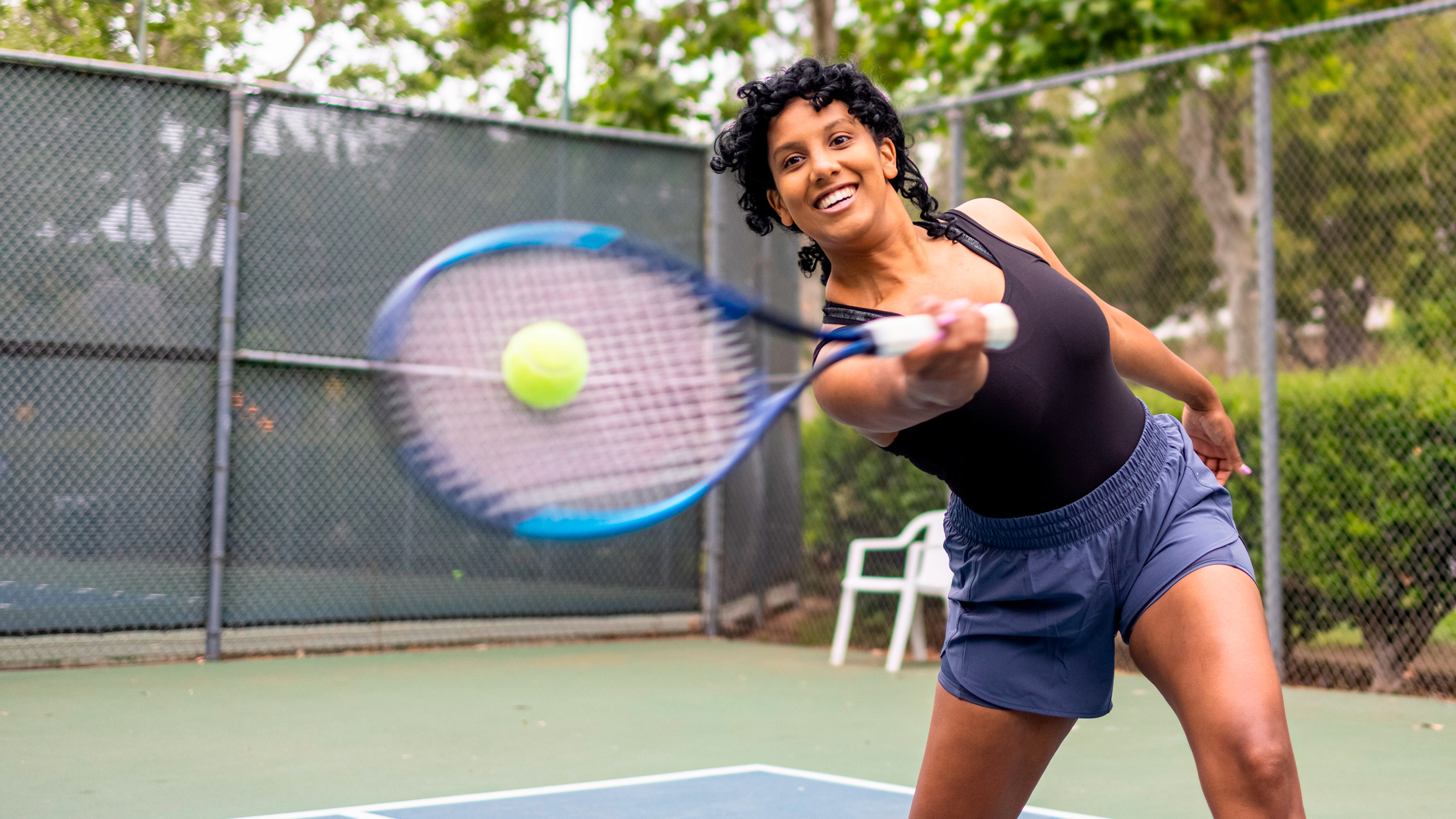Perfect running form: how to reduce injury and improve performance
Alter the way you run to reduce injury and improve performance

Running can be simple: one foot in front of the other, and repeat. But there is a ‘right’ way to run. On the right is the most biomechanically correct posture, reducing impact on your joints and ensuring you are projecting the maximum energy possible into each step.
Getting assessed in a specialised running shop and being paired up with the right trainers for you should correct the way your feet and ankles move when running, but there is more to consider than just your feet.
An incorrect running posture can lead to injury, and you will struggle to feel relaxed and natural when out for a run. You want running to be as easy and as enjoyable as possible to motivate you to keep going out time and again.
Take a look at our annotated figure and try to keep this in mind when you are running. Ensure your shoulders are low and back slightly so you’re not slouching; your back is straight and tall; your stomach muscles are tight, aiding your balance; your hands are loosely gripped to help you stay relaxed, and your arms are moving in a back and forth motion at 90 degrees to help propel you forwards.
As you run, take note of what your body is doing and how you are feeling as you progress. If something feels uncomfortable, then see if you can shift into a more neutral position. Once you get used to running ‘properly’, you will start to do it unconsciously. Always revise your stance halfway through your run to ensure you’re still holding a strong position.
Achieve a strong core

Key strengthening moves every runner should master:

Shoulder
Stay relaxed and keep your shoulders loose and low. You will notice that as you tire, your shoulders will rise up. Shake them out, relax and move them down. Try to keep them level and don’t swing them round too much.
Get the Fit&Well Newsletter
Start your week with achievable workout ideas, health tips and wellbeing advice in your inbox.
Arms
You need to move your arms when running to propel yourself forwards, using the momentum to push yourself forward faster. Your arms should move with the rhythm of your legs, and be kept at 90 degrees. Don’t wrap your arms around your torso when running; keeping them swinging backwards and forwards close to your body.
Torso
Keep yourself straight and tall at all times. Naturally, you will lean forwards slightly, but keep your shoulders rolled back and down to stay relaxed. Running with your chest up tall will allow for maximum lung capacity.
Legs and stride
You will instinctively lengthen your stride and raise your knees higher in order to run faster, but long-distance runners keep their knees low and take shorter strides to conserve energy, increasing foot turnover instead. The proper stride distance is different for every person, but your feet need to land directly underneath you and your knees should remain slightly bent on impact. If your foot extends out too far in front of you, your stride is too long.
Ankles
There should be slight movement in your ankles. As you land they should roll inwards, allowing you to propel yourself forwards adequately. If ankles are too stiff, it could be down to tight calf muscles. Stretching should ease these off.

Head held high
Look ahead as you run and try not to stare down at your feet, as this will ruin your posture. Keeping your gaze high will keep your spine, neck and head aligned for the best form.
Hands
Never run with clenched fists; keep your hands relaxed and structured. As you tire, remember to lower your shoulders and loosen off your grip.
Hips
If your shoulders are down and your back is straight, then your hips should follow in line. Leaning too far forward will mean that your hips will go out of alignment and ruin your form, which will lead to pain in the hips, groin and lower back. Keep your hips level when running; if they drop too much you will be putting undue stress onto your back, legs and torso.
Feet
You should aim to land on the foot between the heel and midpoint, taking off when your foot is rolling forwards. Doing this rolling motion then lifting off will give you more momentum, and power-push you forward more efficiently. You shouldn’t be running flat-footed; if you are, you may have the wrong trainers or need to make slight foot adjustments when running.
Liked this?
Launched in 2020, Fit&Well.com is all about helping you meet your health and fitness goals in ways that are fun and achievable. With news and features on fitness, weight loss, running, nutrition, yoga, wellness and more, we're committed to helping you wherever you are on your fitness journey. We break down the best fitness tech, with reviews, buying guides and the latest deals on fitness and wellness kit, from dumbbells to diffusers.
We cater for all difficulty levels here. It doesn't matter if you're a beginner in the world of fitness or you're gearing up for your tenth marathon: we're all moving towards the same goal – creating a healthier, happier you. From guides on getting started doing walks around the block, to creating the perfect work-from-home space, to eating to fuel your first triathlon. It's all here.
-
 I do these two things every day to stay fit and healthy, says the newest star trainer on Chris Hemsworth's fitness app
I do these two things every day to stay fit and healthy, says the newest star trainer on Chris Hemsworth's fitness appHere's how Centr's Korey Rowe trains for longevity
By Sam Rider Published
-
 I thought sports weren't for me, until I realised they're a game-changer for ticking off cardio
I thought sports weren't for me, until I realised they're a game-changer for ticking off cardioI swapped HIIT and running for tennis—and I've never felt better
By Alice Porter Published
